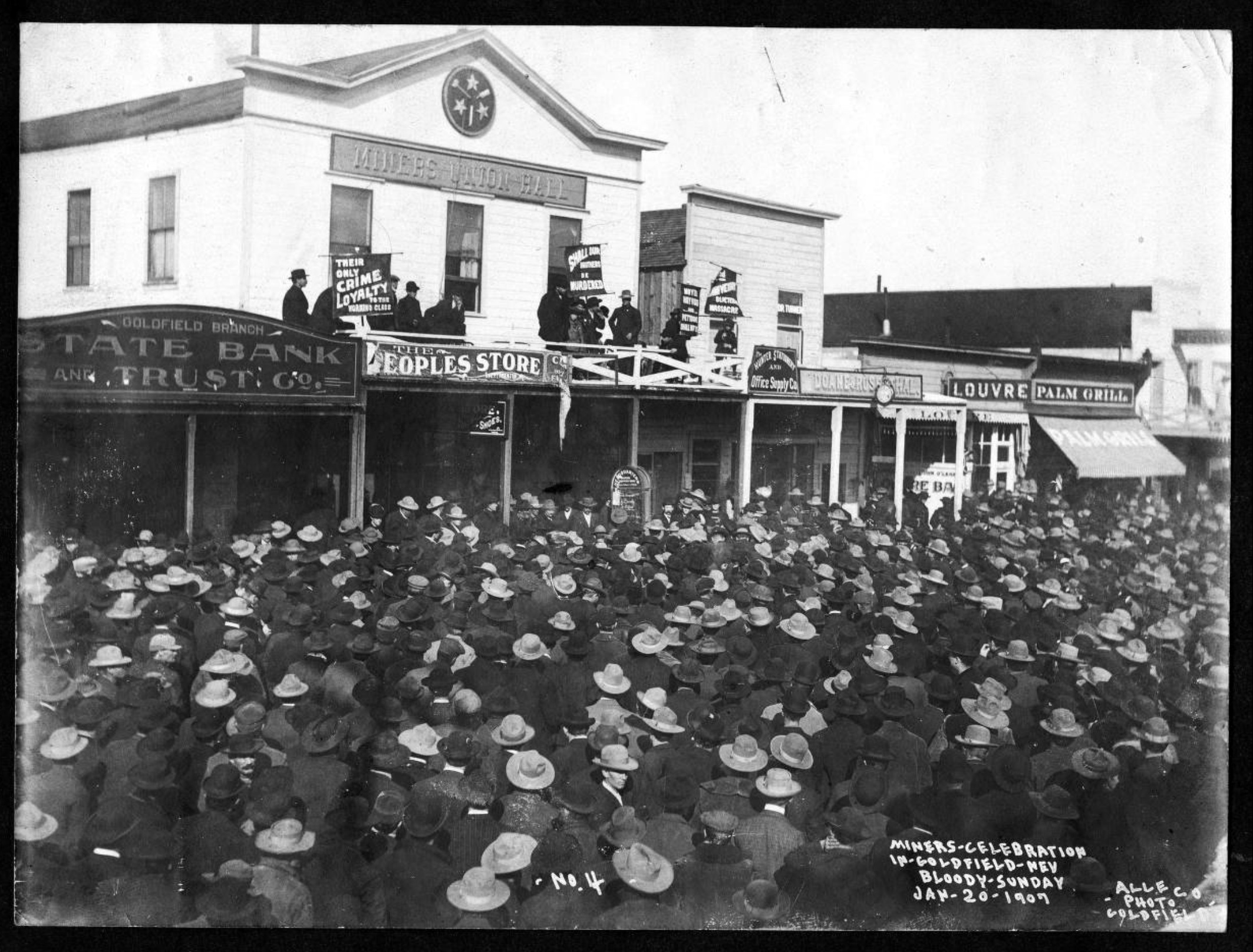SECAC 2022
Labor in and on the Landscape: Architectures of Organizing in the Mining Town, 1875–1925
Conference Presentation, October 2022

An evolution and expansion of prior work on Miners’ Union Halls, this paper is part of a larger project on architecture by/for organized labor. This research has been an exercise in
material compilation and archive construction. Miners union locals were
decentralized in their governance, and the records of most have been lost. The general pattern was, as one historian
has put it, that the union hall was not merely a place for formal organizing
meetings but also “the center of social and intellectual life” for miners. This
pattern played out simultaneously in many boomtowns across the West where
miners’ working conditions spurred the formation of unions. In this paper I sketched the history of
this building type through a handful of singular cases from Nevada’s Comstock Lode and South Dakota’s Homestake Mine to the streets of Goldfield, Nevada and Butte, Montana, showing its evolution from its origins to a
symbolic demise at the hands of one union’s own members.
Research supported by a collections engagement grant from the Utah Museum of Fine Arts / J. Willard Marriott Library.
Western Federation of Miners Local no. 220 Union Hall, Goldfield, Nevada serves as the backdrop for a 1907 demonstration on the second anniversary of the “Bloody Sunday” massacre in St. Petersburg, Russia. UNLV Digital Collections.
Research supported by a collections engagement grant from the Utah Museum of Fine Arts / J. Willard Marriott Library.
Western Federation of Miners Local no. 220 Union Hall, Goldfield, Nevada serves as the backdrop for a 1907 demonstration on the second anniversary of the “Bloody Sunday” massacre in St. Petersburg, Russia. UNLV Digital Collections.